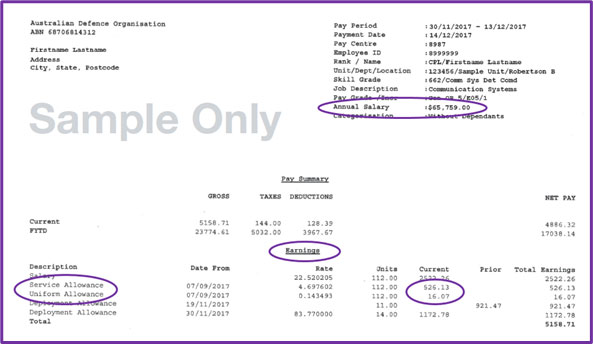
Stop. Think. Protect. Simple tips to avoid being scammed.
May 16, 2023
Tackling problem gambling
June 20, 2023Aussies love to bet.
In fact, a recent study reveals 73% of Australian adults gamble at least once a year. That’s not too surprising perhaps, given most of us place a bet on Melbourne Cup Day.
What’s more surprising is the huge growth in gambling advertising in Australia. Would you believe our gambling industry now spends $287.2 million a year advertising gambling?
Well, it does. The gambling industry spent that in 2021, and that was $15.9 million more than it forked out in 2020.
In fact, there’s a whole range of devious ways that the wagering industry gets us to gamble more, and, for many, the more they gamble, the more they lose – in more ways than one.
What makes us gamble?
Some of us may start gambling for a bit of fun and have an early win. So, we keep playing in the hope that we’ll win more and experience those good feelings again. Unfortunately, we’re statistically likely not to win, but we keep gambling in the hope that we can turn it around, and the cycle of compulsive gambling can begin.
What makes us gamble more?
The fact is, gambling is easier and more accessible than ever. It seems like everyone has a smartphone, and there’s heaps of betting platforms and apps to choose from, which means we can put a bet on in minutes.
Punters who bet online have an average of two accounts and almost 20% have three or more accounts. Three online gambling accounts? Now that’s a pretty invested punter. Imagine all the emails you would get to remind you to put a bet on!
However, it’s not just easy access that influences our gambling habits. The gambling industry works hard to drive us to bet, in sneaky ways and in some pretty overt ways, like TV and digital ads.
Take Ikea, that Swedish import that furnishes so many of our homes. The retailer’s layout is designed to direct customers through department after department, just to reach the exit, in the hope that they shop more, as they walk through.
Gambling products are designed in the same way: they’re actually designed to make us gamble more.
- Pokies, with their bells, whistles and music, compel you to keep trying your luck
- Casinos are glamorous and exciting, and imply people are winning big – why not you?
What about bingo, it’s harmless right? It’s now digitised so you can play even more games than with pen and paper and it’s usually located close to the pokies, which encourages more serious forms of gambling.
The tricks behind sports betting are a bit harder to spot. They include:
- Inducements from bookies, like bonus bets and cashbacks, to encourage greater spending and riskier betting
- Complex offers, like a favourite to win or a large score line, can cause confusion and lead to greater losses
- Online access to a large number of sports and events worldwide, is available 24/7.
It’s pretty clear the industry wants us to gamble more, spend more and, let’s be honest, lose more – and it appears to be working.
Sports betting
Aussies are spending more than ever on sports bets. The industry hit a whopping $50 billion turnover in 2021-2022, almost doubling in ten years. That’s the equivalent of every adult in the country gambling $2,500 a year.
However, it’s young people who’re betting on sports the most and there’s a strong link between seeing betting advertising and riskier gambling behaviour.
- 18-34 year old employed males living with kids are the most likely to gamble on sports betting, racing and pokies
- Exposure to sports betting advertising has the greatest impact on young people (18–34 years old) and people at risk of gambling harm.
Should we be worried?
A large majority of us believe that gambling is too common in Australia. Research shows most of us think there are too many opportunities for gambling and believe sports betting advertising normalises gambling activity.
Many also believe sports and race betting is “too prevalent” and “makes sport less family friendly”.
Perhaps we should be worried. A bet now and then won’t break the bank for most, however, at least two in five Aussies gamble at least weekly and gambling harm is more common than you might think.
Gambling harm
Almost 50% of gamblers are at some risk of gambling harm, with varying degrees of severity.
Young males are most at risk. They’re more likely to gamble, they spend more, they gamble more and they’re more vulnerable to gambling harm than the rest of the population.
- Young adults (18-34) are more than twice as likely to be at risk of gambling harm compared to those aged 55 and over
- Around two-thirds of gamblers who wager on sports (67%), racing (63%) and/or pokies (67%), are classified as being at risk of gambling harm.
Gambling can wreak havoc on families, as well as the individual, and the key areas where gambling causes the most damage are:
- Relationships
- Health
- Emotional / psychological
- Cultural
- Legal
- Work
- Financial
Financial issues tend to be a big one and they’re one of the first indicators of gambling harm.
Getting help
It’s definitely not all doom and gloom. There’s plenty of support services available to help members and their families navigate problem gambling and financial stress.
Check out our article, Tackling problem gambling, for tips on how to take back control of your finances, how to cut back on gambling and where to get help.






